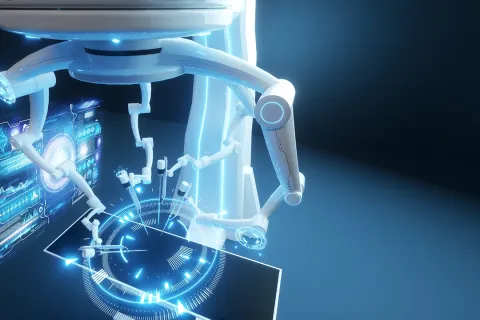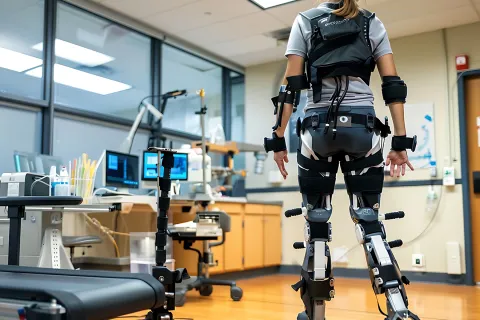
Technical writing is a profession that only seems easy and straightforward. It requires finer skills and involves the usage of various tools to create the right content and get the information that is apt and easy to understand. The challenge for technical writing begins with an in-depth understanding of the product or service, staying abreast of its functionalities, and knowing and understanding the target audience.
It can be tedious to be a technical writer. It involves gathering all the technical details, ensuring the content is not monotonous, and streamlining the documentation process with no or negligible mistakes. Good technical writing requires awareness and knowledge of tools that make the job easier. Prior to moving towards popular tools in technical writing, let us look at a few must-have skills for technical writing. Such as:
- Research Skills
- Research and exploration are the backbones for the technical content, making the data more credible and convincing. Working as a technical writer under any client requires writing about products or related data that one has never heard before. Having good research skills and a keen observing mind helps to dig information from several sites to formulate the content.
- Audience Analysis
- Audience analysis translates to having a good awareness of the end user and generating inclusive content. Analyzing the audience is essential for every technical writer’s success. It is necessary to differentiate the readers from highly technical, moderate, to less technical. It forms the base of text representation; an audience with less technical knowledge will require text (content) that is less technical. Some key questions that help to perform audience analysis are:–
- Who is your target audience?
- What do they know about your technical field?
- What is their occupation?
- What are their interests and needs?
- Communication Skills
- A technical writer’s role involves actively listening and planning before contributing to the written discourse. Possessing good communication skills greatly facilitates towards technical writer’s overall ability. Good communication paves the way, whether it is coordinating with SMEs or stakeholders on the project or posing important queries to gather information.
- Writing Skills
- Precise and concise writing is an avid skill for technical writers. Writers should be able to convey accurate information through technical manuals, SOPs, and technical reports, among many forms of documents.
- Technical Skills
- There is a difference between acquiring a diploma or degree in any technical field and having a thorough knowledge of specialized areas. The latter is a must to work as a technical writer. Technical writers are expected to work in vital industries, from IT, Insurance, and Banking to Medical Devices, Pharmaceuticals, Healthcare, etc.
- Teamwork
- Mostly assumed a desk job, most technical writers often have to work with cross-functional teams and departments. Collaborating with designers, developers, testers, project managers, and product managers is part of the daily routine for technical writers. A technical writer needs to be a good team player and team builder, with having conflict resolution skills, decision-making skills, and planning and organizational skills.
Though not an exhaustive list of tools, there are some of the foremost ones that a technical writer must possess. Technical writing and software documentation tools help technical writers curate the right content to help get the contextual information correct and easy to understand. These tools are useful in the writing, editing, drawing, reviewing, and rewriting of documentation.
As much as the phases remain largely unchanged, the choice and the usage of tools, to an extent, varies with respect to the product or industry. A coding-specific IT environment may require tools that offer flexibility in the API documentation. In contrast, the Medical Device industry focuses on tools that provide more accessible design options. Given the variety of available technical writing tools, let us focus on the ones precisely aligned with medical devices. Such as:
- Microsoft Word
Microsoft Word is a simple tool and rather basic one to be at the top of the list. The simple combination of MS Word with Adobe Acrobat Reader Pro, allows you to seamlessly create documents with easy conversion between PDF and DOC formats. The fact is that MS Word remains the most commonly used tool for creating various documents and is a technical writer’s best friend. So common that this article happens to be written using the same!
- Windows Snipping Tool
Window Snipping tool is part of the Windows suite of software and an excellent resource for basic screen capture. Apart from full-screen capture, it allows freehand crops or partial area crops. A neat feature of this tool is possible using the delay option, which allows capturing still images from the exact frame of videos.
- Powtoon
Technical writing and its peripheral work are increasingly becoming visual. Powtoon is an excellent web-based animation tool sold as a SaaS product. It allows for the creation of innovative, animated presentations and explainer videos. Animated presentations are an engaging way of capturing user attention, and Powtoon lets you excel at this craft.
For technical writers, taking screenshots is part of their daily routine, especially if it involves documentation of Software as a Medical Device. Images are the best way to represent features and make the content easy to comprehend.
SnagIT is a screen capture tool for technical writers to make their documents look consistent and professional, with features such as:
- Panoramic scrolling capture
- Captures drop-down menus
- Borders and image effects
- Exports to cloud storage
It is one technical writing tool on which most people learn the basics of HTML programming. It is an extremely effective and usable HTML editor for beginners. It is mainly used for making help files of medium size and if a software product does not require hefty online help documentation.
Adobe Photoshop needs no introduction. It is the world’s most popular image editing tool for creating and editing photos and artwork. It also happens to be a popular tool amongst technical writers. It comes in handy while creating UI designs, editing a picture for print, manipulating an image, superimposing one image over another, and more. A deft feature of this tool is that the image editing remains a reversible process, easily allowing to roll back changes.
Windows Movie Maker is another tool that comes default as a part of the Windows essentials software suite (until January 2017). It is a simple tool that technical writers can use to edit videos.
Adobe FrameMaker is an authoring tool for any technical writer considering re-using content, where topic-based writing is concerned, and for a structured documentation process. It is a document processing tool that suits extensive industry standard documentation. FrameMaker is a DITA (Document Information Typing Architecture)-friendly technical writing tool with the built-in ability to print a PDF and a great alternative to editors like MS Word. Some of its salient features are:
- One-click image resizing
- XML file handling
- Multidevice publishing
- Mini table of contents
oXygen XML Author is a free, open-source DITA-compliant XML editor. DITA is an open standard for document authoring and publishing that is finding its way into technical documentation. It removes the dependency of editing content on a particular tool. Also, it allows for creating DITA-compliant online documentation (a set of XML files), thus opening a possibility in the future to easily edit, update and maintain the files through any other DITA-compliant tool.
Apart from the above list of prominent tools, a few other tools like Microsoft PowerPoint, Microsoft Excel (beginner level), Prezi, Help+Manual, and HelpnDoc stand essential while initiating technical writing for Medical Devices.
Contact a technical writing expert for more insights on technical documentation of medical devices.









